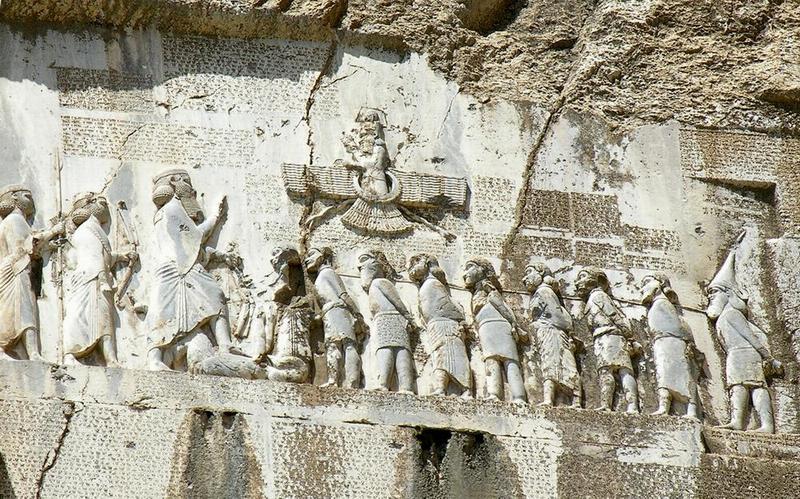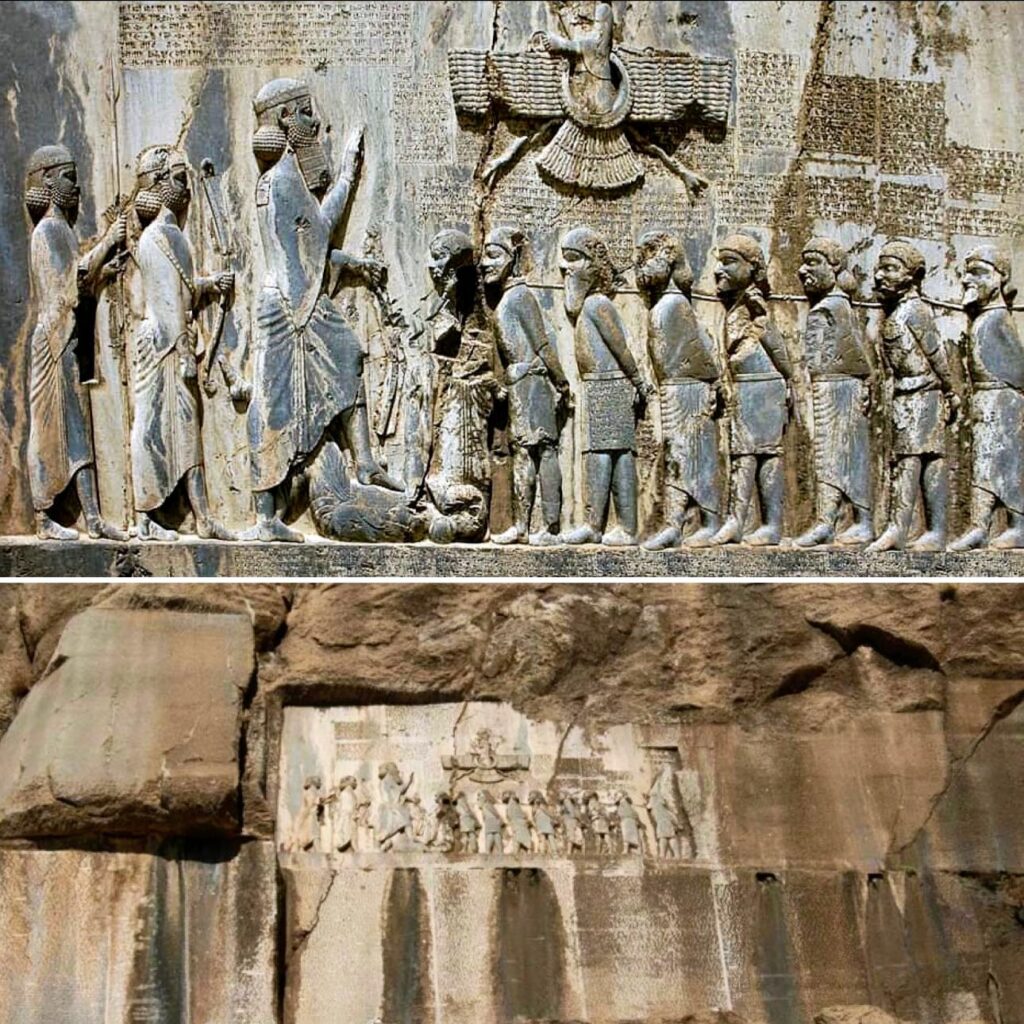The Bisotun Inscription stands as a monumental achievement of ancient Persia, showcasing the grandeur and authority of King Darius the Great. Carved into a towering cliff in modern-day Iran, this inscription serves as a testament to Darius’s ambition and the vast reach of the Persian Empire.

Commissioned around 520 BC, the inscription’s multilingual text reflects Darius’s desire to communicate with the diverse peoples of his empire. By inscribing the message in Old Persian, Elamite, and Babylonian, Darius ensured that his decree could be understood by subjects from different cultural and linguistic backgrounds.

The content of the inscription recounts Darius’s rise to power, his military conquests, and his efforts to govern his empire justly and effectively. It serves not only as a historical record but also as a declaration of Darius’s legitimacy as ruler and his divine right to rule, supported by the depiction of Ahura Mazda, the chief deity of Zoroastrianism.

The accompanying imagery, depicting Darius triumphant over his enemies, reinforces his status as a powerful and victorious leader. Moreover, the Bisotun Inscription has been instrumental in the study of ancient languages and scripts, providing valuable insights into linguistic and cultural exchanges in the ancient Near East.
Overall, the Bisotun Inscription stands as a remarkable testament to the political, military, and cultural achievements of ancient Persia under the reign of King Darius the Great. It continues to fascinate scholars and visitors alike, offering a window into the rich history and legacy of the Persian Empire.
